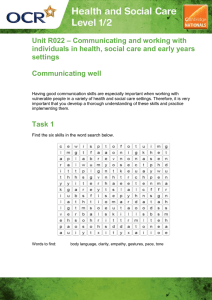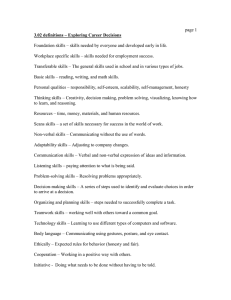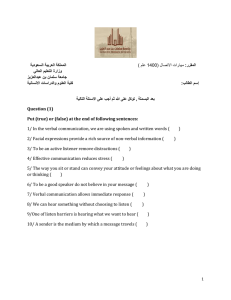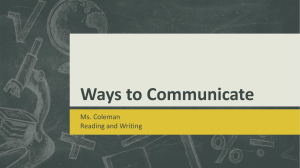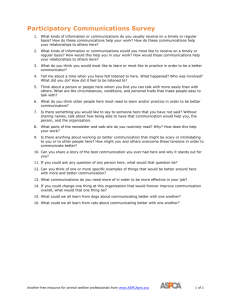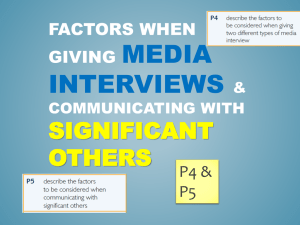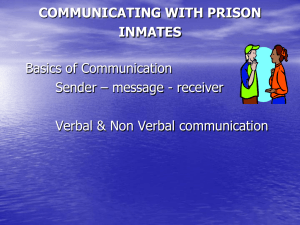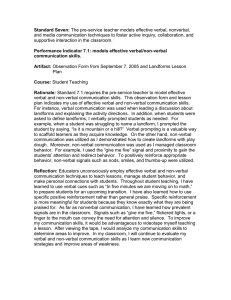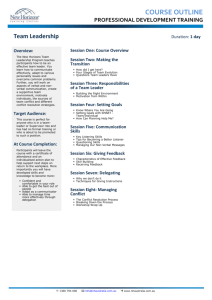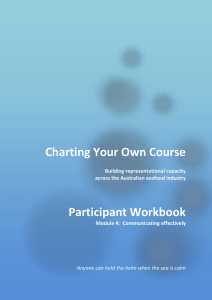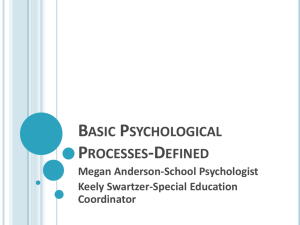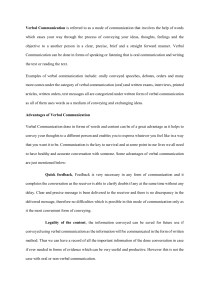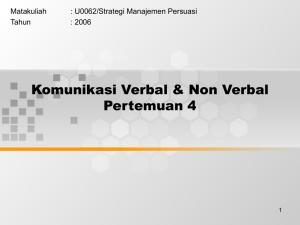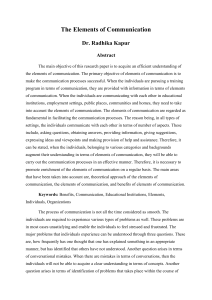Chapter Two - Marion ISD
advertisement
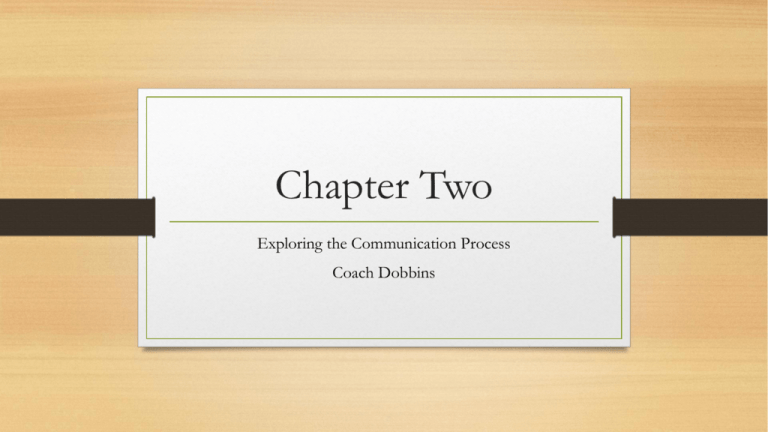
Chapter Two Exploring the Communication Process Coach Dobbins The Communication Process • When you understand the process of communication you have some powerful tools. • What does baseball and communicating have in common? Both are a series of actions that work together to produce a result…in other words they are both process. Elements of Communication • Process: the parts and actions work together to achieve results • Communication constantly moves, shifts, and changes • Action, energy, and results • Communication uses mental and physical energy of people who speak, listen, use nonverbal behaviors, and interpret the verbal and non-verbal behaviors of others. Elements of Communication • Meaning in communication • Thoughts, ideas, and understandings that are created, exchanged, and shared by communicators • We constantly create meanings as we try to understand the world around us and as communicators we try to share those ideas. • One of the best ways to learn and retain information is to teach it to others. • You do not understand an assignment so you talk to the teacher. You then go on and explain the assignment to other students. Elements of Communication • Symbols in communication • • • • Stands for an idea or feeling Ex: a trophy stands as a symbol of a victory Symbolic interaction means you rely on words (verbal or non-verbal) What are common symbols you see when communicating with: • Friends • Teachers • Parents Principles of communication • You must understand what communication is before you apply it to your life. • Five basic concepts: • Transactional • Complex • Unavoidable • Continuous • Learned Transactional • A process that involves an exchange • Sender • Receiver • Bargaining or persuading • All components are interactive : each part and each action affects others. complex • Communication is complex because it is: • • • • • • • Interactive Symbolic Personal/ cultural Irreversible Impossible to duplicate Circular Purposeful Unavoidable • Many of you have heard the saying “ we are not communicating” ( even a refusal of communication is communicating) • Your on an elevator alone and suddenly it stops to allow another person on. What things do you do to avoid conversation? Even thought you may feel uncomfortable because someone is in your space and you avoid conversation …are you not still sending a message? • How often do you use your phone to avoid conversation? continuous • Once you have an interaction with an individual, future communication with him or her is forever impacted by your initial communication and your memories of it. • If you go to a restaurant and have a terrible waiter how likely are you to go back? • “ First impression is everything” Learned • Communication skills are mainly learned behaviors • What are some communication skills that you have learned from your family? • All these skills can be improved through practice. Components of the communication process • Context: provides people, occasion, task • Physical environment: influences the quality of interaction within the physical space • Climate: influences the emotional, attitudinal, and intellectual tone (emotional atmosphere) • Negative/ positive/ environment • Communicator: creates meaning, sends and receives messages, and exchanges meaning Components of communication process cont. • Message: conveys meaning, feeling and various types of energy from senderreceiver to receiver-sender • Channel: provides the space through which the message must pass; determines the message used to send the message • Noise: interfere or disrupt communication • Barrier: blocks communication • Feedback: assures and provides insight. Analyzing the Action: Sender-Receiver • Sensory perception: complex physical process of taking data through the five senses • Data: things that catch a commentators attention ( objects, people, sounds…) • Encoding: mental process of assigning meaning and language to data • Connects meaning to data then filters that meaning • Transmitting: physical process of sending verbal and non-verbal messages Analyzing the Action: Receiver-Sender • Acquiring: physical process used to take in a message • Ex: Sight, smell, touch • Decoding: mental process used to create meaning from language • Takes symbols such as words and gives them meaning • Feedback • Verbal/ non-verbal How would you complete the next sentence? • I spend most of my waking time………….? • 75% of our waking times is spent communicating • Oral language • Written communication • Non verbal cues 5 levels of communication Level of communication Business example Social example Intrapersonal Should I tell my manager her plan has a flaw? Do I agree with how this club spends money? Interpersonal Did you go to the meeting? May I sit here? Small group Who will volunteer to research the personal needs for this project? Who will make the signs for the fundraiser? One-to-group Over the next half hour I intend to show our potential sales this quarter Remember everyone needs to bring a dish for the potluck dinner. Mass The public is invited to attend a free financial workshop this weekend. As the weather gets warmer, remember to provide plenty of fresh water to your pets. For more tips on pet care contact your local vet. Becoming a competent communicator Diagram pg. 58
